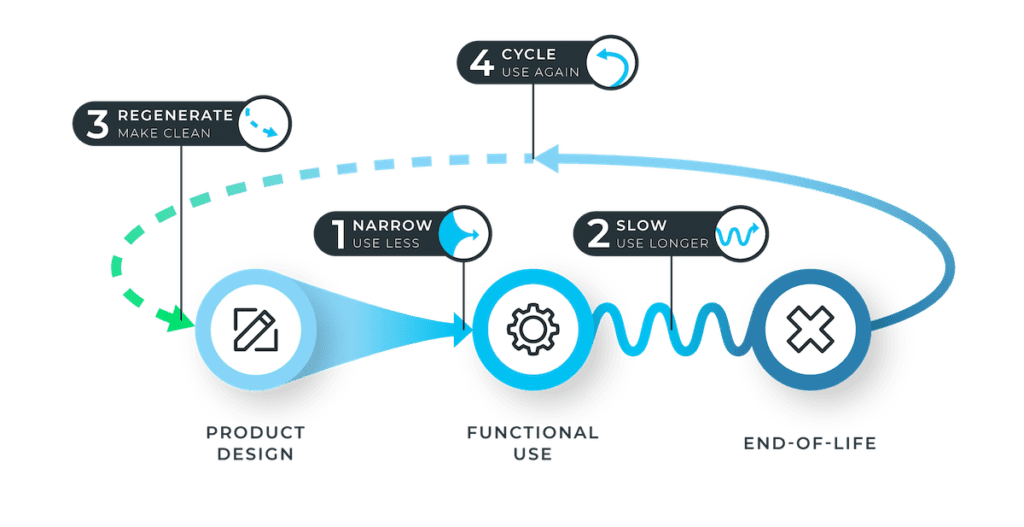
The global Circularity Gap is bad; and getting worse. This is the plain truth told this week at the launch of the annual Circularity Gap Report, created and authored by Circle Economy, published for 2023 in conjunction with Deloitte.
Rising material extraction has shrunk global circularity: from 9.1% in 2018; to 8.6% in 2020; and now 7.2% in 2023. This leaves a huge Circularity Gap, with the globe almost exclusively reliant on new (virgin) materials.
The latest estimate of the Circularity Metric reveals that secondary materials — those that are actually cycled back into the global economy after the end of their useful life — currently account for just 7.2% of all material inputs.
So what happens to all the rest?
Well, more than 90% of materials are either wasted, lost or remain unavailable for reuse for years, as they are effectively locked into long-lasting stock such as buildings and machinery.
The problem is excess; linear excess.
The global economy is now consuming materials at the rate of more than 100 billion tonnes a year. To put that in perspective, this means that over the past six years alone of the Circularity Gap Report (CGR), the global economy has extracted and used almost as many materials as over the entire 20th century.
As a global society, therefore, we are operating in perpetual state of planetary overshoot; and such a rate and scale of material consumption is patently unsustainable.
Fulfilling people’s needs within safe planetary limits
The good news is that we already know the solution to the problem: it is the circular economy.
The CGR 2023 shows that with a circular economy, we can fulfil the key needs of people worldwide with just 70% of the materials we currently use — therefore operating within the safe limits of the planet.
At present, by contrast, our economic model is breaching those safe limits; again and again.
Today, five of the nine key ‘planetary boundaries’ that measure environmental health across land, sea and air have been broken — largely due to the impacts of the linear ‘take-make- waste’ economy.
In response, the CGR 2023 argues that it is critical we transform our relationship with materials to maximise benefits for people and to minimise the pressure on the planet’s life-support systems.
Essentially, the report finds that adopting a circular economy could not only reverse the overshoot of planetary boundaries, it could also slash the global need for material extraction by about one third.
Country-by-country: Shift, Grow and Build
To act fast, then, we must prioritise.
So, analysis provided within the Circularity Gap Report 2023 demonstrates that unleashing a combination of just 16 transformational circular solutions across four key systems — Food, the Built Environment, Manufactured Goods & Consumables, plus Mobility & Transport — can reverse the current overshoot.
It must be noted, though, that no two nations are the same.
Each country has a different starting point and will progress at a different pace towards the shared global goal of reversing environmental overshoot, while fulfilling people’s needs.
So, to help give a general steer and a framework for action, the CGR groups the countries of the world into three primary categories: Shift, Grow and Build.
- Shift: The world’s highest-income countries deliver generous standards of living, but consume the majority of the world’s materials and massively overshoot many planetary boundaries. These countries must focus on reducing overconsumption and lightening their impact on the environment.
- Grow: Middle-income countries are rapidly industrialising and have an expanding middle class, which means their material consumption has increased, but some are now reaching saturation points. These countries should concentrate on new ways to stabilise and optimise their material consumption to maximise societal wellbeing.
- Build: These countries house the majority of the world’s population but use less than a 10th of the materials of Shift countries. Their focus should be on the building-up of infrastructure and the provision of wellbeing — even if this requires that they increase their material footprint.
In all of this, purpose-driven collaboration between the public and private sectors is essential.
The report concludes with a Call-to-Action for business leaders and policymakers to work together with a shared focus around three core circular economy principles: Reduce; Regenerate; Redistribute.
Jim McClelland, Founder and Editor of SustMeme was a Contributing Author to the Circularity Gap Report throughout the first five years since its inception back 2018. He also shared insights with the team at Circle Economy for the 2023 Edition, too.
Further Reading:
- View and/or download the Circularity Gap Report 2023 in full, or as an Executive Summary;
- Watch the video recording of the launch event, held 16 January for the Circularity Gap Report 2023;
- More on the wider work of Circle Economy, the creators of the Circularity Gap Report series and Circularity Metric;
- More from Deloitte on their views around the global Circularity Gap;
- More about the concept of nine key ‘Planetary Boundaries’, devised by the Stockholm Resilience Centre;
- Also on SustMeme, Circular economy investment set to spike;
- Also on SustMeme, Circularity: The word snowballing down from Davos;
- Also on SustMeme, Circular economy strategies can cut global emissions by 39%.
Check out the full archive of stories on the SustMeme Circular Economy Channel, Sponsored by Dow.
SUSTMEME: Get the Susty Story Straight!






